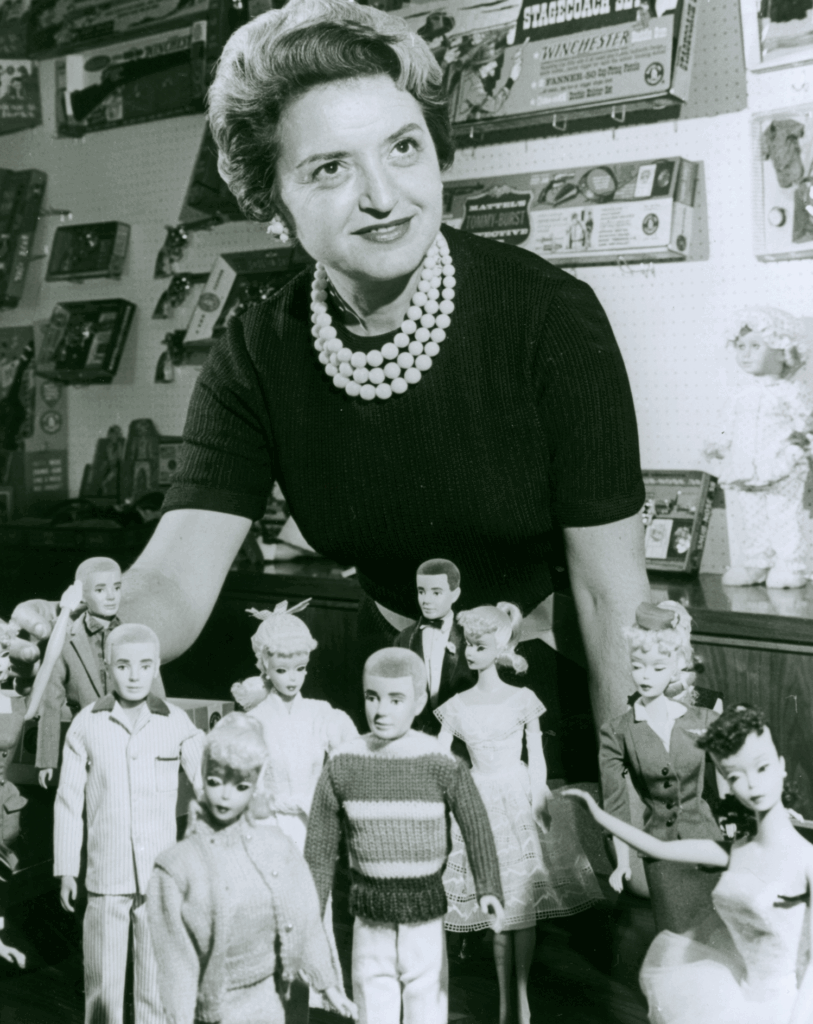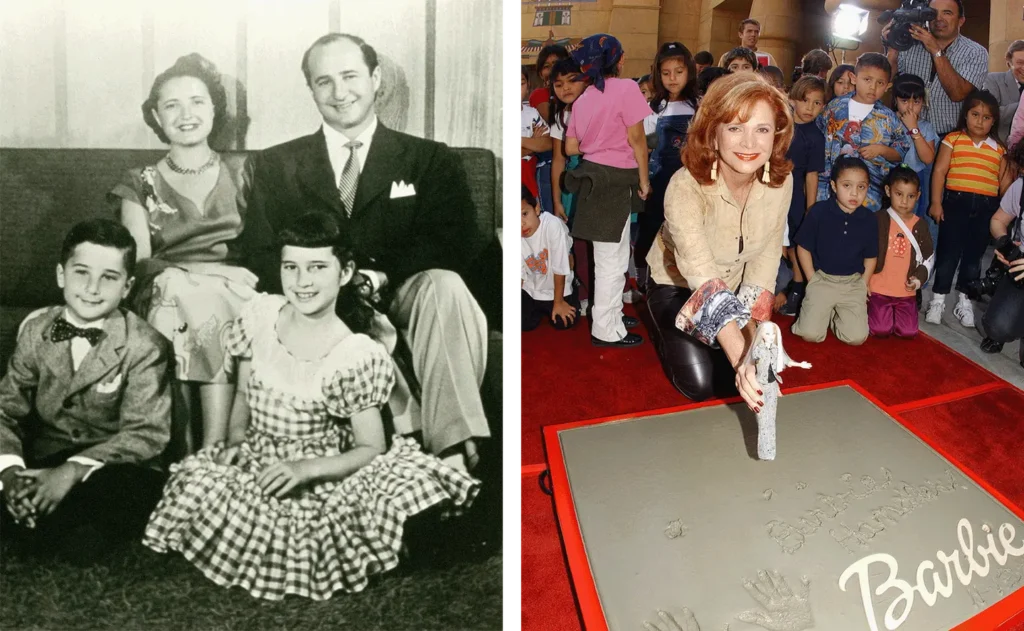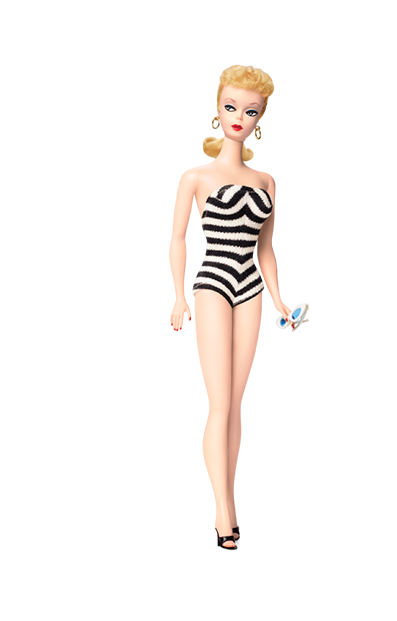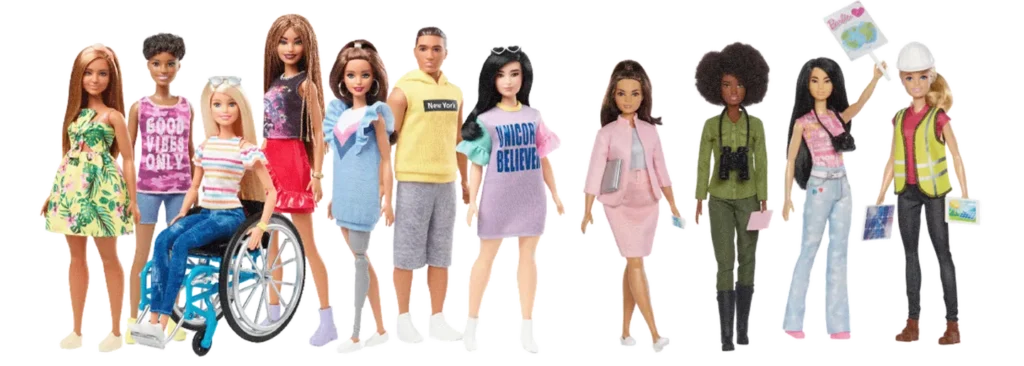In June of last year, images of Margot Robbie and Ryan Gosling, both sporting beach blonde hair, went viral as they filmed scenes for the upcoming Barbie movie. Clad as the iconic doll and her companion Ken, the duo donned ‘90s neon workout attire and bright yellow roller skates, captivating superfans with their nostalgic portrayal.
Fast forward to today, as the Barbie movie gears up for its release on July 21, enthusiasts can now own the exact gear seen in those viral images. Priced at $190, the Barbie x Impala Rollerskates are just one of over 100 collaborations and branded partnerships orchestrated by parent company Mattel, capitalizing on the anticipation surrounding Greta Gerwig’s directorial debut, a summer blockbuster in the making.
According to Mattel President and COO Richard Dickson, Barbie signifies the beginning of a new era for the brand, evolving from a simple doll into a comprehensive franchise. Dickson, clad in a Barbie t-shirt, emphasizes, “Barbie has transitioned from a toy to a concept. The potential to expand and market the brand extends far beyond individual products.”
The recent surge of all things pink is no accident—it’s a strategic move. From Barbie-branded Crocs to vibrant luggage from BEIS and Barbie x Moon electric toothbrushes, the market is flooded with Barbie-themed merchandise. Fans can pamper themselves with Barbie x Truly soap sets, flaunt Barbie x OPI nail polish, and embrace comfort in Barbie bras from MeUndies. Even wardrobe choices expand with Barbie x Gap clothing lines. For music lovers, the film’s soundtrack boasts new tracks from Dua Lipa and Nicki Minaj, whose fan base is famously dubbed “Barbz.” For the ultimate Barbie experience, enthusiasts can book a stay at Airbnb’s real-life Malibu DreamHouse, a destination already frequented by John Legend and Chrissy Teigen.
And of course, indulging in frozen treats is made sweeter with offerings from the aptly named Pinkberry.

A Doll's House: In June, Airbnb listed a "Ken-themed" Barbie Dream House in—where else?—Malibu.PHOTOS, FROM LEFT: JOYCE LEE(2); HOGWASH STUDIOS
The film features Kate McKinnon, Issa Rae, and Hari Nef portraying Barbies, with Simu Liu, John Cena, and Kingsley Ben-Adair as additional Kens. Will Ferrell stars as a meta Mattel CEO. It is anticipated to gross between $80 million and $100 million during its opening weekend. Additionally, AMC theaters reported that approximately 20,000 moviegoers have already secured tickets for a unique opening day double feature showcasing Barbie and Oppenheimer, Christopher Nolan’s film on the invention of the atomic bomb.
Despite nearing retirement age at 65 next year, Barbie remains as vibrant as ever. Throughout her extensive career as a fashion model, nurse, ballerina, and more, Barbie has consistently demonstrated resilience. In 2021 alone, she achieved a record-breaking $1.7 billion in annual sales and was recognized as the world’s top toy. The anticipation surrounding this summer’s Barbiemania is only expected to amplify her influence.

Family Affair: Ruth Handler named famous creations after her daughter, Barbara, and son, Kenneth.MATTEL, INC.
Mattel was founded in 1945 by Ruth Handler, her husband Elliot, and Matt Matson. The brand’s name was a fusion of the first names of the two men. While Elliot focused on design, Ruth was the driving force behind the business. Tanya Lee Stone, author of “The Good, the Bad, and the Barbie,” describes Ruth as the embodiment of determination, taking the company from a garage startup to a rented space.
As the company’s president, Ruth epitomized the ethos of her doll, demonstrating that “women can be anything,” according to Robin Gerber, author of “Barbie and Ruth: The Story of the World’s Most Famous Doll and the Woman Who Created Her.” In an era when few women held executive positions, Ruth was a trailblazer in the industry.
The inspiration for Barbie struck Ruth while observing her daughter, Barbara, and her friends play with paper dolls that frequently tore. She noticed that the girls weren’t merely role-playing as children or mothers but as professionals like librarians and teachers. This realization led Ruth to understand that little girls aspired to emulate grown women, yet there were no adult dolls designed for children to play with.

All In the Family: Ruth and Elliot Handler with Ken and Barbara in the 1950s. Right: Barbara Handler puts Barbie's feet in cement in Los Angeles in 2012.MATTEL, INC.; ROBERT MORA/GETTY IMAGES
Handler’s inspiration for Barbie’s design struck during a family trip to Lucerne, Switzerland, where she and Barbara encountered Bild Lilli, a doll modeled after a gold-digging cartoon character. Handler bought three dolls and began designing outfits for her version of the doll. According to Gerber, Handler grasped the concept of creating a doll with interchangeable clothes, allowing girls to easily change outfits without frustration.
The primary aim for Ruth was to create a miniature mannequin that made it effortless for girls to remove the head and switch outfits, enabling them to imagine themselves as anything they desired, Stone explains.
Barbie made her debut at the American Toy Fair in New York City in 1959, but it was her first TV commercial later that year that propelled her popularity. Approximately 300,000 dolls were sold in the inaugural year at $3 each (equivalent to about $31 today). Presently, an original Barbie doll in pristine condition fetches upwards of $27,000, while the contemporary range spans from $10.99 for Fashionista Barbie to a unique doll crafted by Australian jewelry designer Stefano Canturi, which sold for $302,500 in 2012 (or about $400,000 presently).
Following Barbie’s introduction, Mattel received numerous requests for her to have a boyfriend. In 1961, Ken—named after the Handlers’ son, Kenneth—was introduced. Despite the brand’s success, the Handlers faced challenges in the 1970s. Ruth, diagnosed with breast cancer, resigned in 1975, preceding her indictment by the Securities and Exchange Commission for falsifying financial statements. She eventually pleaded no contest.
After a period of stagnation in the 1980s, Barbie experienced a resurgence. “It took 28 years to get Barbie to $430 million in sales and just three years to get her to $700 million,” stated John Amerman, Mattel’s chairman, in 1991. At the time, the brand accounted for half of Mattel’s sales, signifying a significant resurgence.

Himbo: Ken was introduced in 1961. The most valuable are Dress Box Ken, released between 1963 and 1965.MATTEL, INC.

Serious Plastic: A mint condition Barbie from 1959 sells for more than $27,000.MATTEL, INC.
During the 2000s, Barbie embarked on her digital journey. Under Dickson’s guidance, Barbie Entertainment was established, leading to the release of her first film, the animated feature “Barbie In The Nutcracker,” in 2001. Simultaneously, Barbie.com, her inaugural website, made its debut.
Dickson departed from Mattel in 2010 but returned in 2014 during one of the company’s most challenging periods. Barbie’s sales plummeted to their lowest point in 25 years, totaling only $900 million. Dickson vividly remembers the shocking CNN headline that greeted his return: “Is Barbie Dead?” The traditional beauty standard Barbie epitomized for over five decades—slim, Caucasian, blonde—no longer resonated with consumers. “Her portrayal of perfection became outdated,” he acknowledges.
Consequently, Barbie underwent a significant image overhaul. Mattel initiated changes to her skin tone and embraced diversity. “The approach wasn’t just about introducing dolls with diverse skin tones; it involved revamping the entire brand’s visual identity,” Dickson explains. Mattel revamped its packaging and commercial advertisements to reflect the new diverse range. Furthermore, Barbie’s unrealistic body proportions were reimagined for the 21st century, introducing tall, petite, and curvy versions of the doll. With Barbie assuming different sizes, her clothing, vehicles, and residences had to undergo transformation. “Every aspect had to be redesigned.”

Changing Face: Following flagging sales, Mattel gave Barbie a major makeover in 2016, adding more diverse dolls with a range of new professions.MATTEL, INC.
The Barbie movie mirrors the intricate relationship the audience has developed with Handler’s iconic 11.5-inch figure over the years. “Greta Gerwig advocates for portraying strong, female-driven narratives where women are celebrated,” explains Dickson. “The Barbie brand embodies this ethos, showcasing Barbie as a resilient female protagonist steering her own narrative. This wouldn’t have been possible without the incredible groundwork laid prior.”
As one of the film’s trailers boldly declares: “If you love Barbie…if you hate Barbie, this movie is for you.”
During production, Margot Robbie expressed to CEO Ynon Kreiz: “If we don’t address certain things—if we don’t articulate them, someone else will.” Dickson adds, “We were prepared to embrace being uncomfortably comfortable.”
The decision to produce a Barbie movie wasn’t merely a brand expansion; it signifies a long-term business strategy that will be replicated across Mattel’s extensive portfolio, which encompasses approximately 400 toy brands.
This strategy isn’t entirely novel. Hasbro ventured into similar territory with the release of a G.I. Joe movie in 2009. The inaugural film, “G.I. Joe: The Rise Of The Cobra,” starring Channing Tatum, garnered $300 million worldwide. Its sequel, featuring additions like Dwayne “The Rock” Johnson and Bruce Willis, performed even better, raking in $375 million.

Barbie World: Margot Robbie and Ryan Gosling as Barbie and Ken; the cast of 'Barbie' and director Greta Gerwig on the pink carpet; Gerwig and Robbie celebrate their summer blockbuster.PHOTOS, FROM LEFT: MEGA/GC IMAGES; IAN WEST/PA IMAGES VIA GETTY IMAGES; HANNA LASSEN/GETTY IMAGES
If Mattel aims to forge the next Marvel Cinematic Universe, Barbie stands as its Iron Man. “We’ve got over 13 film projects in development. We have over 30 television shows in production,” Dickson reveals. The roster includes a Daniel Kaluuya-produced film geared towards adults centered on Barney the purple dinosaur, a Hot Wheels movie produced by J.J. Abrams, and a Vin Diesel-led live-action adaptation of Rock ‘Em Sock ‘Em Robots.”
The debut of Barbie arrives at a juncture when Mattel’s financial statements could benefit from a lift. By the end of Q1 in April, the company recorded $814.6 million in net sales, marking a 22% decline year-over-year. Barbie contributed $177 million in gross sales globally, down 44% from the previous year, yet accounting for nearly 58% of Mattel’s overall doll gross sales. “We couldn’t be more confident and excited about the brand’s future,” Dickson expressed during a recent earnings call.
His optimism for the brand outshines Barbie’s iconic pink hue. “We’re collaborating with top-tier partners in console gaming, mobile gaming, and a range of other digital experiences that propel Barbie forward,” Dickson asserts. Barbie has ventured into the realm of blockchain and became the first toy brand to venture into the realm of NFTs. “We’re embracing cryptocurrency,” Dickson adds. “Barbie serves as a canvas for artists, influencers, and collaborative ventures.”
As Barbara Millicent Roberts approaches her 65th year, her spirit remains fueled by the same essence Ruth Handler infused six decades ago.
“Barbie transcends mere toy status,” Dickson emphasizes. “She embodies a wellspring of inspiration.”

